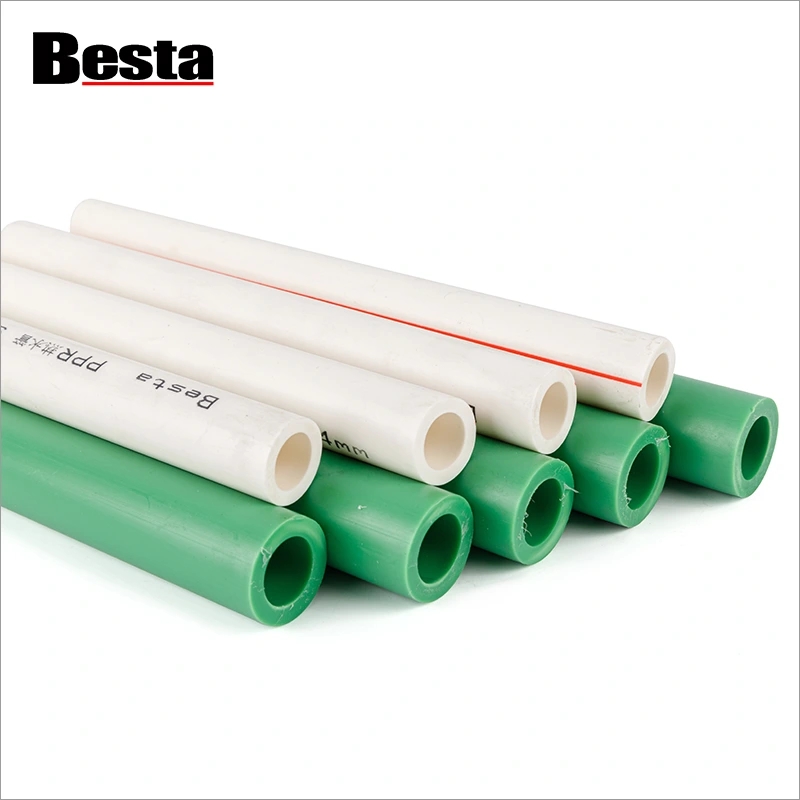- English
- Español
- Português
- русский
- Français
- 日本語
- Deutsch
- tiếng Việt
- Italiano
- Nederlands
- ภาษาไทย
- Polski
- 한국어
- Svenska
- magyar
- Malay
- বাংলা ভাষার
- Dansk
- Suomi
- हिन्दी
- Pilipino
- Türkçe
- Gaeilge
- العربية
- Indonesia
- Norsk
- تمل
- český
- ελληνικά
- український
- Javanese
- فارسی
- தமிழ்
- తెలుగు
- नेपाली
- Burmese
- български
- ລາວ
- Latine
- Қазақша
- Euskal
- Azərbaycan
- Slovenský jazyk
- Македонски
- Lietuvos
- Eesti Keel
- Română
- Slovenski
- मराठी
- Srpski језик
Compatibility Issues of Different PPR Pipe Fittings
2025-03-11
Because of their longevity, corrosion resistance, and simplicity of installation, PPR (Polypropylene Random Copolymer) pipes are frequently found in plumbing systems. However, compatibility problems could occur if you use different PPR pipe fittings together. Performance, longevity, and overall system dependability may all be impacted by these problems. When working with PPR pipe fittings, bear in mind the following important compatibility issues.
1. Variation in Material Grades
PPR pipes and fittings come in different grades, such as PPR-80, PPR-100, and composite variants. Mixing different grades may lead to inconsistencies in pressure resistance and thermal expansion, potentially causing leaks or system failures.
2. Differences in Manufacturer Standards
Different manufacturers may produce PPR fittings that vary slightly in dimensions, wall thickness, and pressure ratings. Using fittings from different brands without ensuring compatibility can result in improper sealing and joint failures.
3. Inconsistent Welding Compatibility
PPR pipes and fittings are joined using heat fusion welding. If different brands or grades of PPR have varying melting points, the fusion process may not create a secure bond, leading to weak joints and possible leaks.
4. Threaded Metal Insert Compatibility
Some PPR fittings include metal inserts for threaded connections. If the metal composition or threading standards differ, it can cause mismatched connections, leaks, or corrosion issues over time.
5. Pressure and Temperature Mismatch
Different PPR fittings have specific pressure and temperature ratings. Using fittings with lower specifications in a high-pressure or high-temperature system can lead to early wear and failure.
6. Chemical Resistance Variations
Some PPR pipes are reinforced with additional materials to improve chemical resistance. If fittings lack similar reinforcement, they may degrade faster when exposed to aggressive chemicals in the plumbing system.
7. Dimensional Differences
Even slight variations in pipe diameter or fitting sizes between brands can result in improper alignment and difficulty in joining, affecting system efficiency and durability.

Ways to Prevent Compatibility Problems
Whenever feasible, utilize pipes and fittings from the same manufacturer.
Prior to installation, confirm the temperature and pressure ratings.
Verify if the materials fulfill the necessary requirements and are of the same grade.
Prior to final installation, test the compatibility of fusion welding.
To guarantee proper fitting and pipe matching, refer to the manufacturer's instructions.
The longevity and functionality of plumbing systems might be jeopardized by PPR pipe fitting compatibility problems. You can guarantee a long-lasting and leak-proof installation by carefully choosing fittings that match in terms of material quality, dimensions, and requirements. Always heed the advice of the manufacturer to get the finest outcomes.
Ningbo Ouding Building Materials Technology Co., Ltd. was founded in 2010 in Yuyao city near Ningbo sea port, and its name was Yuyao Demeng Plastic Mold Factory. At that time mainly focus on mold making, in 2012 we bought injection machines and PPR extruder machine to start produce ppr pipe fittings and ppr pipes.Visit our website at www.albestahks.com to learn more about our products. For inquiries, you can reach us at devy@albestahk.com.




